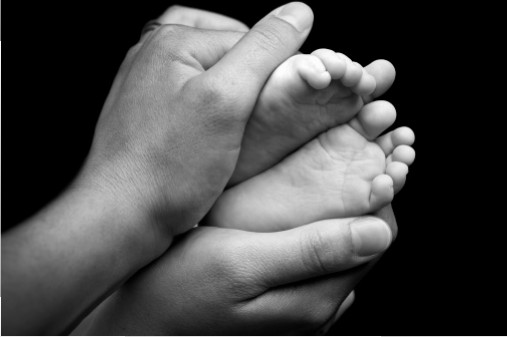Massage for Infants with Physical Disabilities

The Centers for Disease Control (CDC) report that about one in every 33 babies in the United States is born with a birth defect. Specifically, the incidence of spina bifida is one in 2,858.
Approximately one in every 5,349 babies is born with an eye defect. And the most common childhood motor disability, cerebral palsy, affects one baby out of every 323. In addition to medical intervention, massage may serve as a valuable alternative therapy for these babies.
Nurturing Touch
Tina Allen, LMT, CPMMT, CPMT, CIMT, founder and director of Liddle Kidz Foundation, asserts that children of all backgrounds benefit from the use of massage therapy. “However, this nurturing touch can be especially beneficial to children with a variety of healthcare needs,” she says.
For instance, if you massage a child born with spina bifida, you have the opportunity to stimulate local circulation and aid neurological and brain development, while increasing positive body image and decreasing scar tissue associated with medical procedures.
Children born with retinoblastoma, a childhood cancer that affects the eye area, require repetitive procedures that could cause aversion to touch in the facial region.
“With pediatric and infant massage, we can use a gentle protocol to help decrease aversion to touch, while providing an opportunity to relax prior to stressful procedures,” Allen reports.
She adds that infants diagnosed with cerebral palsy or brain injury present with an array of symptoms, which may include a combination of low and high muscle tone, possible onset of contractures, spasticity and decrease in abdominal motility. Allen says, “We can address many of these presentations and concerns with the use of pediatric touch therapy techniques.”
Healthcare Circumstances
Before beginning to massage babies with any of these physical challenges, you need to have a full understanding of the healthcare circumstances so you can abide by all known contraindications and precautions
You should review a complete list of any medications or specialized treatments before beginning any therapeutic plan, according to Allen. “And have approval of the medical provider that it is safe to begin massage.”
Just as “one size fits all” does not apply to adults, babies also require individualized treatment, based on their presentation, medical care and recommendations from the healthcare team. An infant massage session should last only as long as the baby can tolerate, and, if oils are not contraindicated due to allergic reaction, you should choose edible ones.
“Each session is provided with the child’s permission, and nurturing touch techniques can only be administered as long as the child’s cues and communication indicate they are comfortable, happy and relaxed,” Allen points out.
Premature infants require extra special care. Allen advises, “In neurotypical development, we follow the practice of waiting until the infant is three weeks of age before we can employ a variety of massage techniques.”
Parents should give massage to their infants to encourage bonding, so by teaching them proper techniques you can share your power to soothe, heal and nurture.
link



:max_bytes(150000):strip_icc()/Parents-Money-Mental-Health-Services-bc6e3c3e975f4f87a99a4f26ba88f51f.jpg)


